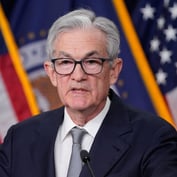While, technically speaking, Guam is part of the U.S.—it’s an organized, unincorporated territory of the U.S., one of five such entities—John Goodrich’s 25 years there gave him substantial experience in international investing. And now that he’s stateside, at Goodrich Financial Group in San Diego, those years of foreign experience are still paying off for his clients.
“Being overseas does give you a bit of exposure [to the international investing arena] that you wouldn’t get in downtown Oklahoma, for instance,” said Goodrich. Many of his clients on Guam were international and were “very interested in investing in their own countries, [and] in others as well,” he said.
Goodrich might have had a nonresident alien from Japan, for instance, “who might want to invest in the ADRs of Honda and Toyota, but also in country-specific closed-end funds, in Asia, and in mutual funds. I was working with resident aliens who were interested in investing in their own countries or in those they were familiar with,” he said.
Goodrich’s California clients reap the benefits of those years on Guam, and although Goodrich doesn’t devote a huge portion of their portfolios to international investing—the usual percentage is between 10% to 15%, although he may go as high as 20%—he uses a combination of ADRs, ETFs, closed-end funds and open-end funds to get exposure to the countries and regions he feels offer the greatest opportunities.
“I like ETFs a lot. I also do some closed-end funds, where you can actually get country specific. I like those,” Goodrich said. “They were the forefathers of international investing when we talk about collective types of investing—long before ETFs, and the only way to get international exposure [back then]—the Korean Fund, the Taiwan Fund; you can get specific that way. You do have to be very cognizant of discounts and premiums that you have to pay for the underlying closed-end fund, though.”
Goodrich doesn’t hold with a specific percentage of the portfolio devoted to international. “It’s really a risk/return measure, not a ratio. [The way] I still look at international [is] that there are elements of risk that we may not be aware of, particularly in emerging markets. Accounting systems are not necessarily [up to] U.S. standards or due diligence, etc. I particularly like the emerging markets, although they’ve been getting beat up of late,” he said.
Goodrich chooses not just by country or region, but also by sector. “Emerging markets have been very good, particularly if you get some of the natural resource types of portfolios. Mining, forest, oil and gas—emerging markets were doing very well in those.”








 November 25, 2013 at 05:00 AM
November 25, 2013 at 05:00 AM










